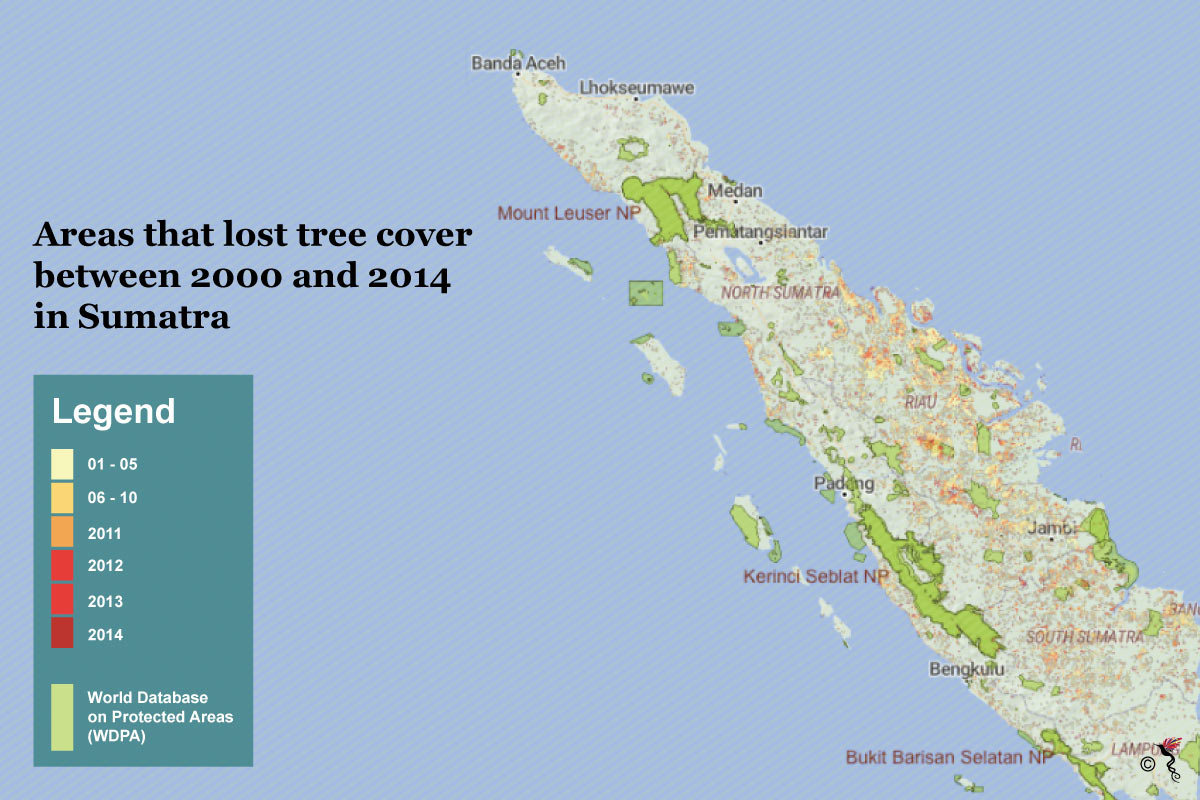The "Panthera tigris sumatrae" better known as the Sumatran tiger has been driven to the brink of extinction by a combination of factors. Since the 1980s, it has been suffering a severe loss of habitat due factors such as the continuous cultivation and harvesting of palm oil and timber estates as well as wildlife trafficking.
Such is the rate of its decline that its population is estimated to be numbered less than 600 in existent in the wild. It is rated as a “Critically Endangered” animal, basically a step away from extinction as per guidelines issued by the International Union for Conservation of Nature (IUCN). It is also important to note, that none of the few scattered tiger subpopulations that remain holds more than 50 individuals.
Often referred to by the local native community, where it inhabits, as the majestic predator of the tropical rainforests, the Sumatran tiger has already disappeared from the neighbouring Indonesian islands of Java and Bali. More importantly, if its remaining refuge continues to decrease in size so will the chances of survival of its species.
For an example, research conducted by academics and conservationist at "Nature Communications" found that deforestation as a result of land clearing, to make way for palm oil plantations, is the primary driver in the continuous habitat loss of the Sumatran tigers. Between 1990 and 2010, Sumatra lost nearly 40 percent of its primary forest.

Additional research also found that between 2000 and 2012, its habitat had already declined by 17 percent and its numbers decreased from an estimated 742 to 618 adults during that period.
The team of researchers led by Matthew Luskin, a graduate student at the University of California at San Diego, studied 15 Sumatran tiger forest landscapes, including the national parks listed as UNESCO World Heritage Sites, namely Mount Leuser, Kerinci Seblat and Bukit Barisan Selatan, which run from north to south along the mountainous western coast of Sumatra.
Matthew and two colleagues spent a year trekking through remote Sumatran forests, mounting hundreds of still and video cameras that automatically captured footage when a tiger, or other large animals, passed by. Easily identifiable, the Sumatran tigers were recognisable through the unique patterns of their stripes.
Based on the data collected, the group of scientists calculated that a single tiger's home range was roughly about 400 square kilometres.
In an interview with AFP, Matthew stated that "the erosion of large wilderness areas pushes Sumatran tigers one step closer to extinction."
"Tiger subpopulations also became significantly more fragmented, greatly increasing the threat of extinction in each individual forest as a species," he added.
The threat continues
The Sumatran forests continue to exist until today, however still under threat mainly in the form of government measures for road and infrastructure development.
Such projects are expected to cut through Mount Leuser, Kerinci Seblat and Bukit Barisan Selatan national parks.
Southeast Asia being a wildlife trafficking hub does not help the situation. With the illegal wildlife trade continuing to thrive so does the rapid decline of the Sumatran tiger population.
The act of poaching is widely driven by the Chinese market that prizes tiger meat, skin and organs. The belief within this market is that these parts of the tiger boost vitality and act as a symbol of status.
Moreover, law enforcement against poaching in Indonesia is often criticised as futile. Perpetrators rarely get prosecuted, and when they do, the sentences dished out are far lower than the maximum prescribed punishment.
The reality for the Sumatran tigers is dark, if these activities do not end as there will surely be no place for the imposing carnivore on the face of the earth.
"Safeguarding the remaining expanses of primary forest is now absolutely critical," said journal co-author Mathias Tobler of San Diego Zoo Global.
Recommended stories:
